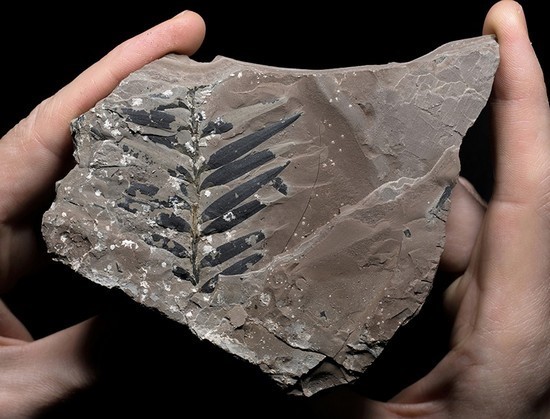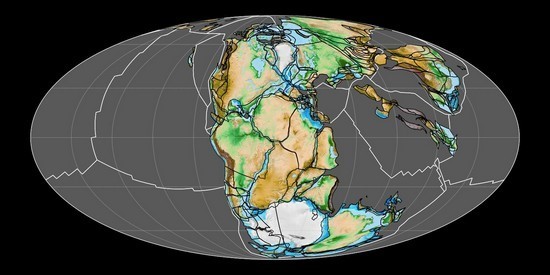Jordan has a rich 4 billion-year-long geographical and geological history, and
few people know about it. Of course, many know landmarks like
Wadi Rum, Aqaba,
and the Dead Sea, but how and why these places are the way they are is less
known.
اضافة اعلان
So, how does it begin? With the help of “Geological
Timescale”, which breaks down the Earth’s history into different eons, eras,
periods, and so on, we will begin to disentangle the daunting scale of Jordan’s
history.
Nearly 4.6 billion years ago, the scorching surface
of Earth began to cool gradually. Some 600 million years later, continents
began to form in what is known on the geological timescale as the Archean Eon,
according to Britannica.com. For the most part, this eon mostly included the
shaping of Earth, and traces of this can be seen in some parts of Jordan, with
rocks and landscape formations from 2 billion years pointing to a “geological
highway” that stretched from Wadi Rum to the
Gulf of Aqaba. This means that
there was a natural cut-out path between the two locations which can still be
followed to this day, according to a study by Klaus Bandel and Elias Salameh.
 Pangea continents and oceans. (Photo: Wikimedia Commons)
Pangea continents and oceans. (Photo: Wikimedia Commons)
Incidentally, this highway may also have been a
tropical one. Geologists have found signs of a tropical climate existing
660–550 million years ago on the Arabian platform. While the idea of a tropical
Wadi Rum may seem unimaginable, the same study said that an Amazonian-like
climate was triggered by the end of a long-global ice age, where temperatures
shifted, and climates were drastically altered.
Cambrian Period
The end of the global ice
age also triggered the beginning of the Phanerozoic era, which is mostly known
for the emergence of complex, or multi-cellular, life, most notably in the
“Cambrian explosion”, nearly 541–252 million years ago. Life in this period
mostly existed underwater since pre-historic creatures had not developed the
necessary traits to live on land, so it is no coincidence that evidence of
running rivers can be found in Wadi Rum during the Cambrian period, with eroded
quartz pebbles in the area indicating long-term underwater erosion.
Unlike today, however, a drive from Amman to New York would be possible on Pangea, with the two cities being almost perfectly in-line with each other while being separated only by the lands of what is now the Sahara Desert in Africa.
More effects of the Cambrian period can also be seen
in the southern Dead Sea, with “Cambrian sands” covering the area near Ghor
Safi and the
Jordan Valley. Geologists have also found “Volcano-conglomerate”,
or water-deposited rocks made up of mostly volcanic materials as defined by
sciencedirect.com. This exemplifies the environmental shifts that have taken
place in Jordan over time.
Jumping ahead of the Cambrian period to 299 million
years ago, Earth’s infamous supercontinent known as “Pangea” came to be. When
looking at a map of Pangea with modern borders provided by Vox.com, Jordan
would sit on the far eastern edge of the continent, still bordering the lands
of Saudi Arabia, Iraq, and
Egypt like it does today. Unlike today, however, a
drive from Amman to New York would be possible on Pangea, with the two cities
being almost perfectly in-line with each other while being separated only by
the lands of what is now the Sahara Desert in Africa.
 A fossilized twig from an ancient conifer that was found along the shore of the Dead Sea. (Photo: Palaeobotany Research Group Münste)
A fossilized twig from an ancient conifer that was found along the shore of the Dead Sea. (Photo: Palaeobotany Research Group Münste)
The Cambrian Period ended with one of many mass
extinctions throughout Earth’s history. Geologists have estimated that the
extinction event, known as the “Great Dying”, wiped out 90 percent of Earth’s
species, according to nationalgeographic.com. Life prevailed, however, and
fossils that survived the extinction event were even found in the Dead Sea,
specifically a 250-million-year-old fossilized species of a conifer plant,
according to Nature.com. The extinction event also marked the start of a new
chapter in Earth’s history — the Mesozoic Period, the age of the
dinosaurs.
It might be hard to picture 110-tonne dinosaurs
roaming the beaches of Aqaba, but 170 million years ago, long-necked titans,
accurately named “Titanosaurs”, walked freely on Jordanian lands, according to
fossil.fandom.com. Fossils of dinosaurs were first found on Jordan’s lands in
2002. In addition to Titanosaurs, archeologists also discovered fossils of
Hadrosaurids, heavy duck-billed herbivores, as well as Brachiosauridae, another
long-necked species of dinosaur which could have weighed more than 80 tonnes
and measured between 18m–22m long, according to fossil.fandom.com.
Cenozoic period
Of course, the time of the
dinosaurs was cut short through a mass-extinction event, thought to have been
mostly triggered by a 150km meteor striking the Earth near the
Gulf of Mexico,
said the nhm.ac.UK. As with the last period in Earth’s history, a great extinction
event led to a new period, the Cenozoic period, which, incidentally, is the
period we are in right now and the period the Earth has been in for the last 66
million years.
With the new period came change and destruction.
Waqf Sawan located a substantial meteor impact crater, with its remnants
showing its profound effect on the general environment of the area. Salameh, a
geologist with a focus on Jordan and co-author of the previous study used, told
Jordan News that the creator is “comparable to crater on the moon” and
that the meteor would have been equivalent to “40,000 Hiroshima bombs”, causing
the heat of the area to reach 1,000°C.
 A projection of Pangea, Earth’s supercontinent. (Photo: Wikimedia Commons)
A projection of Pangea, Earth’s supercontinent. (Photo: Wikimedia Commons)
Also, in the Cenozoic period, a massive continental
drift saw Pangea break apart, and this may have caused the Jordan Rift valley
to fill up with freshwater lakes 36–12 million years ago. Meanwhile, the
Arabian Peninsula split from Africa and caused the Red Sea to form around 20
million years ago, according to Britannica.com.
On the other hand, the
Dead Sea formed around 3
million years ago, as per earthmagazine.com, when the area was filled with
water flowing from the Mediterranean Sea — so, at one point in time, Jordan sat
on the Mediterranean coast. That did not last, though, due to tectonic shifts
lifting the Dead Sea westwards, land-locking the salty water basin.
From these shifts, evidence suggests that hominid
species began to inhabit Jordan’s lands 2 million years ago, according to
worldhistory.org. After a couple million more years, humans not too dissimilar
from us arrived in Jordanian lands between 45,000 and 20,000 years ago,
according to books.openedition.org. There is evidence of people inhabiting Wadi
Rum 6,500 years ago and having trading posts and small villages. From that,
civilizations began to form, with tribes like the Nabateans building cities
2,300 years ago that still partially stands today, like Petra, which the tribe
called “Raqma”, according to history.com.
In due time, civilizations grew, some becoming
empires that directly affected Jordan’s history. The Mongols, the Romans, and
the British all played some part in Jordan’s development over history until the
nation gained independence 76 years ago and Jordan became what it is today.
Read more Features
Jordan News



